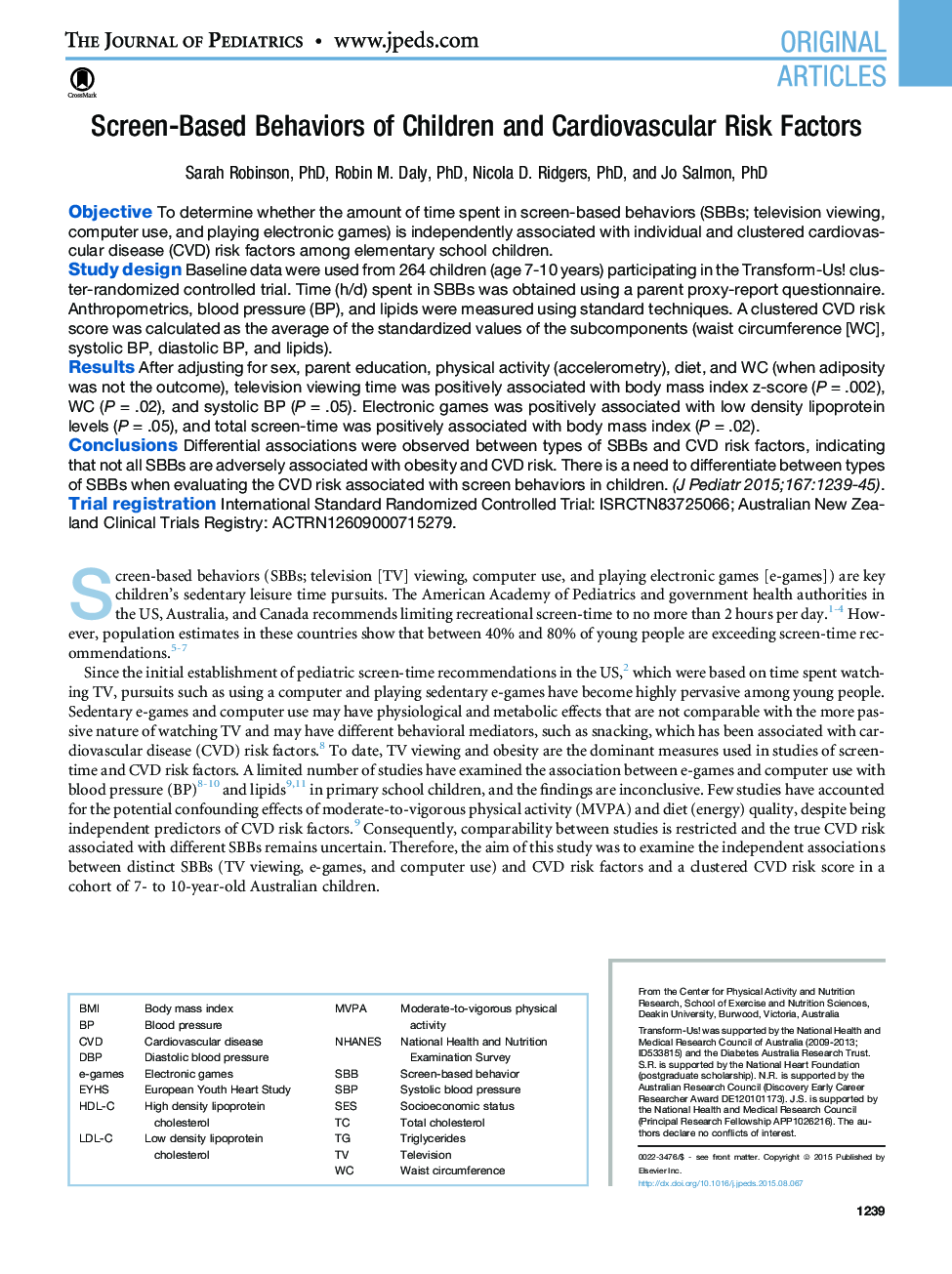| Article ID | Journal | Published Year | Pages | File Type |
|---|---|---|---|---|
| 6219684 | The Journal of Pediatrics | 2015 | 7 Pages |
ObjectiveTo determine whether the amount of time spent in screen-based behaviors (SBBs; television viewing, computer use, and playing electronic games) is independently associated with individual and clustered cardiovascular disease (CVD) risk factors among elementary school children.Study designBaseline data were used from 264 children (age 7-10Â years) participating in the Transform-Us! cluster-randomized controlled trial. Time (h/d) spent in SBBs was obtained using a parent proxy-report questionnaire. Anthropometrics, blood pressure (BP), and lipids were measured using standard techniques. A clustered CVD risk score was calculated as the average of the standardized values of the subcomponents (waist circumference [WC], systolic BP, diastolic BP, and lipids).ResultsAfter adjusting for sex, parent education, physical activity (accelerometry), diet, and WC (when adiposity was not the outcome), television viewing time was positively associated with body mass index z-score (PÂ =Â .002), WC (PÂ =Â .02), and systolic BP (PÂ =Â .05). Electronic games was positively associated with low density lipoprotein levels (PÂ =Â .05), and total screen-time was positively associated with body mass index (PÂ =Â .02).ConclusionsDifferential associations were observed between types of SBBs and CVD risk factors, indicating that not all SBBs are adversely associated with obesity and CVD risk. There is a need to differentiate between types of SBBs when evaluating the CVD risk associated with screen behaviors in children.Trial registrationInternational Standard Randomized Controlled Trial: ISRCTN83725066; Australian New Zealand Clinical Trials Registry: ACTRN12609000715279.
